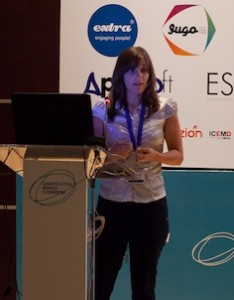This is Part 2 of my interview with Anna Sort. If you haven’t already, check out Part 1 of the interview. Anna is a professional nurse who is working to bring together smartphone and video-game technology into healthcare. She is also an Associate Professor at the University of Barcelona, and works both as a gamification and as a serious games consultant.
Designing a Better Life Interview with Anna Sort – Part 2
Jonathan: What can go wrong with a system that utilizes technology and gaming mechanisms with a worldwide pool of contributors (aka “the crowd”)? For example, how do you design your game to prevent or deal with the abuse the rules or take advantage of bugs or loopholes?
Anna:
I think you cannot really prevent people from trying to cheat in a game, it is part of the challenge and the fun for some people to try to exploit games, so you just have to do your best designing to make it fun to play the regular way rather to make it “uncheatable.”
In our World of Warcraft diabetes add-on we are still deciding if we want the add-on in itself to be fun or not. However, what is clear is that if people wantsto cheat they are allowed to. The add-on is created to fit an exploring environment rather than a “win” situation, it is there for the player to decide whether to play using risky behavior and try what happens if you mix certain things/eat certain foods or to try their best to always “keep in track” with their glucose. It will definitely be exciting as well to see what people will do with the add-on in the end! We are here to learn about how people interact and react to “serious gaming” (using an already existing game for other learning purposes).
Jonathan: What are the biggest challenges you face from a design perspective to create something that people will interact with? How do they apply their virtual learning to their own real lives?
Anna:
This is a very interesting question and is something we ask ourselves. This isn’t explored that much in “serious games” in general. We hope to find out more about this with this experiment. However, we hope to help people understand how the diet and exercise affects diabetes, so in this first experiment we aren’t looking to change behavior in real life, but we will have a couple of questions regarding whether users have made any changes in their lifestyle at the end of the experiment.
Jonathan: What does success look like for your World of Warcraft Diabetes mod project?
Anna:
This is a very difficult question. In this first trial it will be complicated to have a bar to measure to say: “Yes, I’ve succeeded”. At the moment we are working on the add-on but there is a lot of work to do regarding questionnaires. How many will download it? How many will play it? What will be their reaction? There is a lot of work still to be done to determine a good answer for this question.
Jonathan: No problem. When you are truly innovating, you don’t really know until you try out an idea, discover what happens, and refine. Moving on, what new thing/trend/innovation are you keeping your eye on at the moment? Is there anything else you’d like to share with us?
Anna:
I’m very much into gamification and self-tracking apps. I’m a nurse so I’m all about prevention and I think mHealth (mobile health) offers us a great opportunity to focus on that and giving the user tools to take charge in their well being, lifestyle and health.
For more on these ideas and more, check out Anna’s latest presentation: Video Games and Gamification for Health Care .
Jonathan:
Thank you again Anna. I hope for the best in your work, and thanks for contributing to something that is important to all of us!
If you’d like to help out Anna with her WoW diabetes mod project, contact me and I’ll put you in touch with her and her project team.
